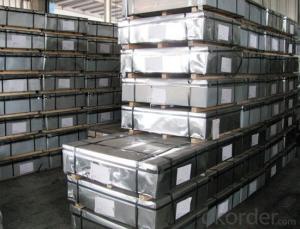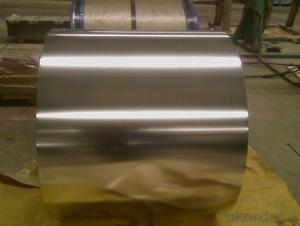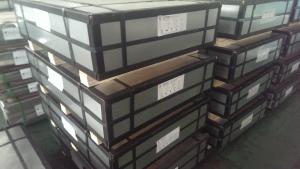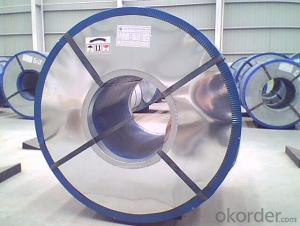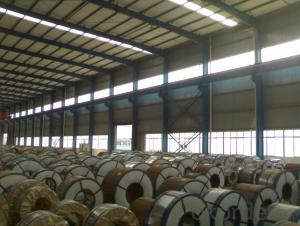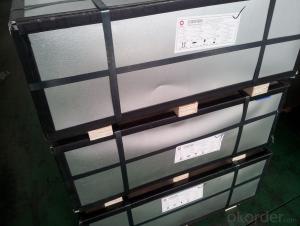Mth Tinplate Trains
Mth Tinplate Trains Related Searches
4 By 8 Plastic Sheets Thin Plastic Sheets Flexible Tinplate Coil Quotes Tinplate Iron Clear Plastic Sheets Hard Plastic Sheets 4X8 Lightweight Plastic Sheets Wavy Plastic Sheets White Plywood Sheets Poly Styrene Foam SheetsHot Searches
Tinplate China Tinplate Stock Price Tata Tinplate Price List Tinplate Price Trend Tinplate Nse Share Price Tinplate Price Chart Tinplate Share Price Nse Tata Tinplate Share Price Tinplate Share Price Today Tinplate Share Price Bse Tinplate Price Tinplate Share Price Tinplate Coil Manufacturers Tinplate Sheet Suppliers Food Mixer Sale Tinplate Factory Tinplate Production Tinplate Products Ltd Tinplate Products Tinplate Can ManufacturersMth Tinplate Trains Supplier & Manufacturer from China
Okorder.com is a professional Mth Tinplate Trains supplier & manufacturer, offers integrated one-stop services including real-time quoting and online cargo tracking. We are funded by CNBM Group, a Fortune 500 enterprise and the largest Mth Tinplate Trains firm in China.Hot Products
FAQ
- There are several methods of cutting and shaping tinplate, including shearing, punching, die-cutting, and laser cutting. Shearing involves using a sharp blade to cut straight lines or curves in the tinplate. Punching is a method that uses a die and a press to create holes or shapes in the tinplate. Die-cutting utilizes a custom-made die to cut precise shapes or patterns in the tinplate. Lastly, laser cutting employs a high-powered laser beam to accurately cut intricate designs in the tinplate. Each method offers its own advantages and is chosen based on the desired outcome and complexity of the project.
- Tinplate is coated with tin through a process called electrolytic tinning. In this process, the tinplate is immersed in an electrolyte bath containing tin salts. An electric current is then passed through the bath, causing the tin ions to be attracted to the steel surface of the tinplate. As a result, a thin layer of tin is deposited onto the steel, providing it with corrosion resistance and enhanced appearance.
- The main growth opportunities for the tinplate industry include the increasing demand for packaged food and beverages, the rising popularity of sustainable packaging solutions, and the growing automotive sector requiring tinplate for various applications. Additionally, emerging markets and technological advancements in tinplate production processes offer significant growth potential for the industry.
- Tinplate and aluminum packaging differ in terms of material composition, appearance, and properties. Tinplate is primarily made of steel with a thin layer of tin coating, while aluminum packaging is entirely made of aluminum. Tinplate has a characteristic silver color, whereas aluminum packaging has a metallic silver appearance. In terms of properties, tinplate offers excellent corrosion resistance and is commonly used for food cans, while aluminum packaging provides superior lightness, flexibility, and recyclability, making it suitable for various products like beverages, pharmaceuticals, and cosmetics.
- Tinplate is typically coated for promotional items using a process called electrolytic tin plating. This involves immersing the tinplate into an electrolyte solution and passing an electric current through it, causing tin ions to be deposited onto the surface of the metal. This coating provides a protective barrier against corrosion and enhances the appearance of the tinplate, making it suitable for various promotional items.
- There are several advantages of using tinplate for electrical enclosures. Firstly, tinplate is highly resistant to corrosion, making it ideal for protecting electrical components from moisture and other environmental factors. Additionally, tinplate is a strong and durable material, providing excellent protection against physical damage and impacts. Furthermore, tinplate is easily formable and can be shaped into various enclosure designs, allowing for flexibility in design and customization. Lastly, tinplate is a cost-effective option compared to other materials, making it a practical choice for electrical enclosures.
- Both tinplate and stainless steel have corrosion protection
- Tinplate is common steel tin plating, tin coating is broken, later, because the tin is more corrosion resistant than iron, so iron will sooner corrosion. Mainly used for tins.
- Yes, tinplate packaging can be used for aerosol products. Tinplate is a commonly used material for aerosol cans due to its durability and ability to withstand the pressure exerted by aerosol products. Additionally, tinplate provides a barrier against moisture and other external factors, ensuring the quality and safety of the aerosol contents.


















